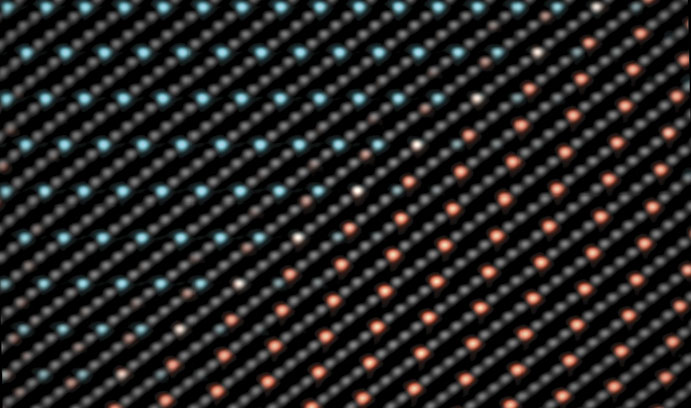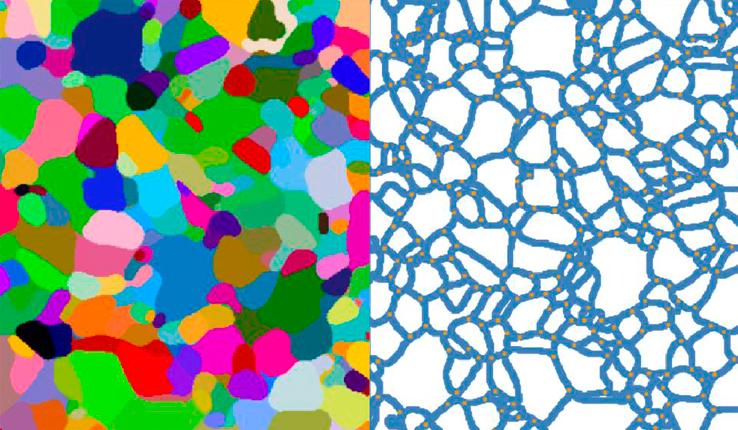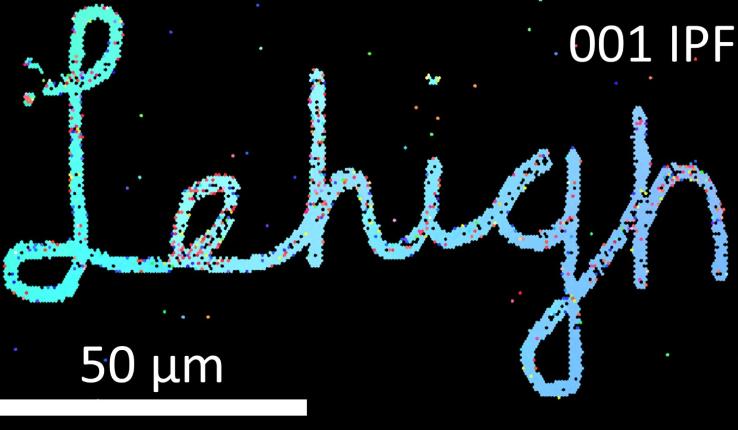Uncharted Territory

An atomic-resolution image of a twin boundary in nanocrystalline Ni-W. Twin boundaries are crucial to the understanding of anti-thermal behavior.
Martin Harmer seeks to understand a phenomenon about which very little is currently known: atoms that behave in a manner contrary to nature. Harmer's work has the potential to revolutionize scientists' basic understanding of thermal processes and inform the development of new materials that could withstand higher temperatures. A breakthrough in this area could lead to significant increases in engine efficiency, for example, saving billions of dollars in fuel costs.
The W.M. Keck Foundation, known for funding science and engineering projects with the potential to pioneer new territory in a field, has awarded Harmer a $1 million grant to discover and study the mechanisms that govern anti-thermal processes that appear to reverse nature. Harmer, the Alcoa Foundation Professor of Materials Science and Engineering, collaborates with Elizabeth Holm and Gregory S. Rohrer, both professors of materials science and engineering at Carnegie Mellon University, on the project, titled "Anti-thermal Behavior of Materials: Reversing the Trend of Nature."
The atoms in solids typically move exponentially faster with increasing temperature, obeying a classical law of physics. This motion fundamentally limits the properties and performance of materials. Turbine engine components, for example, start to weaken at higher temperatures, limiting the maximum operating temperature and efficiency of the engine.
A major challenge in condensed matter science is to combat this trend of nature in order to produce materials that are more efficient, resilient and enduring. Researchers at Lehigh, Carnegie Mellon and the Karlsruhe Institute of Technology have recently identified examples of several anti-thermal processes which actually become slower, or do not change at all, as the temperature increases. Anti-thermal behavior has been detected in isolated cases in metals, ceramics, semiconductors, polymers and biomaterials.
In experimental and atomistic simulation studies of nanograin metals, grains—microscopic crystals that form the metal—were found to grow exponentially faster than expected at room temperature.
In another experimental study—a collaboration that included investigators at Lehigh, Karlsruhe, and Aveiro University—the grains in a ceramic grew more slowly at higher temperatures, the opposite of expected behavior.
The researchers' goal is to study and discover the unknown atomic mechanisms that govern this intriguing type of anti-thermal behavior. They will then use this understanding to design new materials with enhanced thermal performance that have the ability, for example, to increase the operating temperature and efficiency of engines, or the service life of bulk nanograin solids.
With Keck funding, Harmer and his colleagues will apply a novel method for measuring grain boundary motion inside multigrain materials. The team will seek to understand the process by applying methods of atomistic computer simulation and utilizing Lehigh's atomic resolution electron microscopy instruments to directly image the atom movements associated with anti-thermal behavior. An imaging stage will be utilized to make in-situ observations of atom movements at operating temperatures.
Says Harmer: "This project will allow us to explore uncharted territory that could potentially uncover the secrets of nature's counterintuitive thermal behavior and pioneer new approaches to materials science."
Martin Harmer’s research interests have focused on advancing the fundamental understanding of microstructure control, sintering, grain growth and transport behavior of inorganic materials for tailoring the material properties. Harmer received his Ph.D. and D.Sc. from the University of Leeds in England and was recently named a Distinguished Life Member of the American Ceramic Society (ACerS).
Story by Lori Friedman
Posted on:






